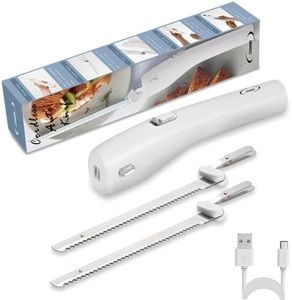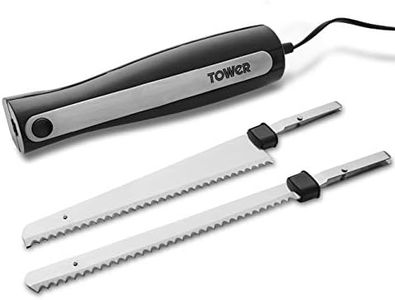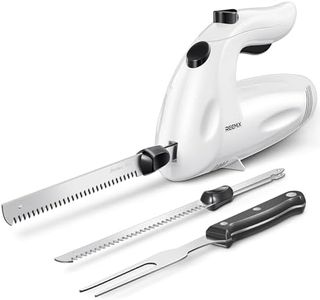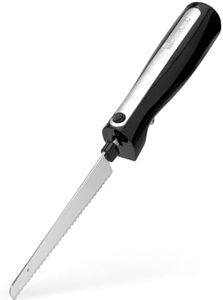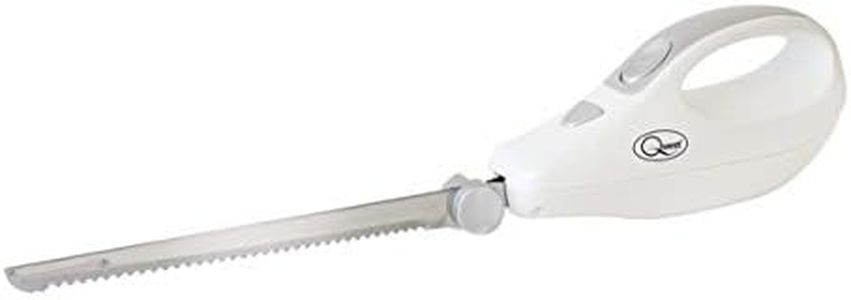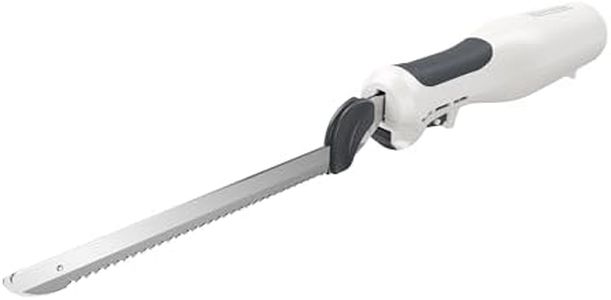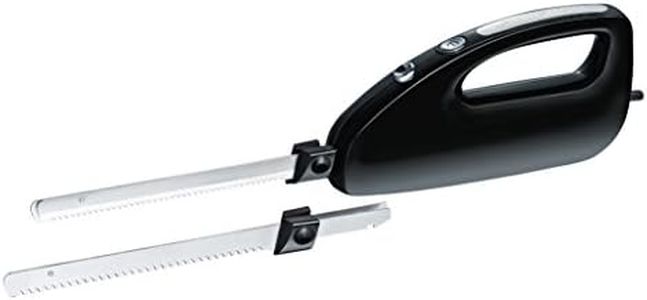We Use CookiesWe use cookies to enhance the security, performance,
functionality and for analytical and promotional activities. By continuing to browse this site you
are agreeing to our privacy policy
10 Best Electric Carving Knives
From leading brands and best sellers available on the web.Buying Guide for the Best Electric Carving Knives
Choosing an electric carving knife can make slicing meats, breads, and even some vegetables much easier and faster in the kitchen. The main goals are comfort, cutting efficiency, safety, and convenience. Think about what kinds of foods you cut most often, how much space you have for storage, and how important cleaning and handling are to you.Blade materialBlade material refers to what the knife blades are made of, usually stainless steel or sometimes a special alloy. This is important because it affects both the sharpness and durability of the blades. Stainless steel blades resist rusting and tend to be the most common. Thicker or higher quality metals usually last longer and require less sharpening. If you’ll use your knife frequently, go for higher-grade stainless steel for longevity.
Blade lengthBlade length is how long the cutting edges are. Longer blades (around 9-10 inches) are better for slicing large roasts or big loaves of bread, while shorter blades (about 7 inches) offer more control on smaller foods. Consider what you carve most — for mostly sandwiches or small jobs, a shorter blade is sufficient, but for big family roasts, choose a longer blade.
Motor powerMotor power determines how easily the knife can handle tough or thick foods. While power is sometimes listed in watts, it may simply be described as 'powerful' or 'high torque.' Lower power models are fine for softer foods like bread, but frequent meat carvers or frozen foods need a stronger motor to avoid stalling or struggling. Match the power to the types of food you expect to carve the most.
Comfort and handle designThe handle design and how comfortable it feels in your hand is key for safe, easy-carving. Look for ergonomic shapes, non-slip grips, and good finger guards. If you have smaller or larger hands than average, consider trying the grip before you buy. Prioritize comfort if you plan to carve large items or work for longer periods.
Ease of cleaningCleaning refers to how easily you can get the knife and its parts clean after use. Some electric carving knives offer detachable blades that are dishwasher safe, while others require careful hand washing. If convenience matters, opt for blades that come apart easily and can go in the dishwasher. This is especially important if you carve frequently or handle sticky or greasy foods.
Safety featuresSafety features include blade-locking mechanisms, trigger or button guards, and sometimes double switches to prevent accidental turning on. These are crucial for families or anyone who values extra protection. Look for features that ensure the knife is only on when you’re ready to use it, especially if inexperienced users or kids are around.
Corded vs CordlessElectric carving knives can be corded (plugged in while using) or cordless (battery-powered and rechargeable). Corded models give steady power and are good for longer cutting jobs. Cordless knives offer freedom to move, helpful for outdoor events or if your kitchen outlets are far from your cutting area. Pick the one that fits where and how you carve most often.

